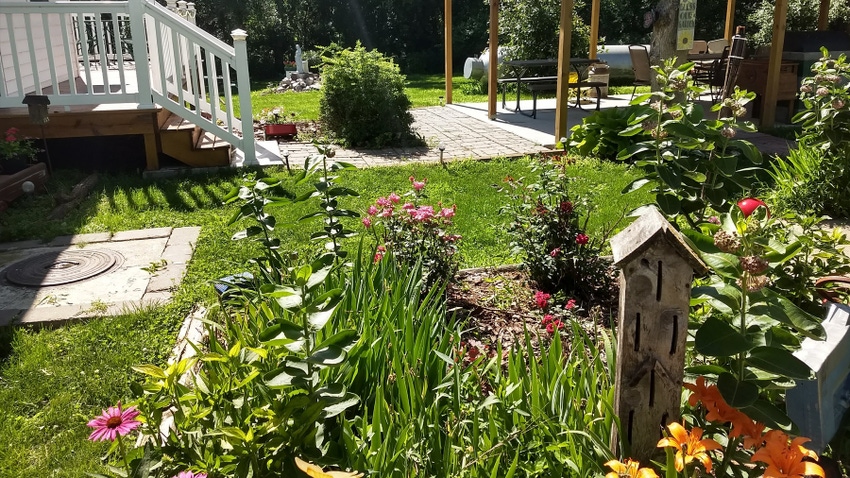May 5, 2023

by Wayne Ohnesorg
How can I attract beneficial insects into my yard and garden? While any vigilant gardener will watch for unwanted invaders in their garden, it is also a good idea to think about how to either attract or promote beneficial insects in your gardens. The same principles apply to either vegetable or flower gardens.
First off, the term “beneficial” can take many forms in a garden. Insects can be pollinators, predators, parasites or nutrient cyclers. All of them play important roles, but the same general strategies are involved to preserve and promote them in the home landscape.
Many insects that are predators and parasites of other insects rely on resources from plants. Now, don’t be concerned about them harming your plants. Think of them like larger wildlife or game animals. They all need the appropriate habitat in which to live. The plants act as shelter from weather conditions they may not like.
Also, the nectar and pollen produced by the flowers serve as an important alternative food source. To make it even more interesting, some plants have structures called extrafloral nectaries. These nectaries are not designed for pollinating insects such as bees. Rather, their purpose is to encourage predators and parasites to hang around the plant by feeding them. It’s almost like the plants are hiring bouncers to keep unwanted insects out.
Healthy plants
Despite a plant’s best efforts, an intervention to control a pest will be needed eventually. Some interventions can be preemptive and others reactive. Your preemptive efforts should focus on keeping your plants healthy. Proper fertilizing, watering, mulching, light exposure and selecting pest resistant cultivars are a good foundation.
Even when getting all these factors right, you will still need to be prepared for reactive measures to deal with pests. How you handle a specific situation will depend on the plant and pest involved. However, there are a few general options you can easily consider.
First, many pests, such as aphids, can be washed off plants with a strong blast of water from the hose. Physical removal can be done by hand or clipping off the affected portions of the plant. Lastly, you can use a pesticide to control the pests. There are many different types and ways to apply pesticides.
When applying pesticides in the home landscape, you can reduce the risk of pesticide exposure to beneficial insects. First, whenever possible, apply pesticides only when needed. Avoid applying to plants that are in bloom, or at least avoid applying to flower portion of the plant. Also, microencapsulated, dust and wettable powder-formulated products are more toxic to bees. When the spray dries, the hairs of the bees can pick up the pesticide and bring it back to their colony or nest.
Minimize pesticide drift to keep non-target areas from exposure to pesticides. Bees are most active from midmorning to late afternoon or early evening. By spraying during the evening or early morning, bee exposure to pesticides can be reduced. Many products are particularly toxic to bees and are specified as so on the label.
That leads to another important point: A pesticide product can be chosen based on its ability to effectively control the pest and its reduced toxicity to bees. Lastly, all pesticide products should be applied according to label directions. Labels should be read thoroughly before application of any pesticide.
By keeping these strategies in mind while working with your gardens and landscapes, you can help to preserve and promote beneficial insects.
Ohnesorg is a Nebraska Extension educator based in Madison County.
You May Also Like




